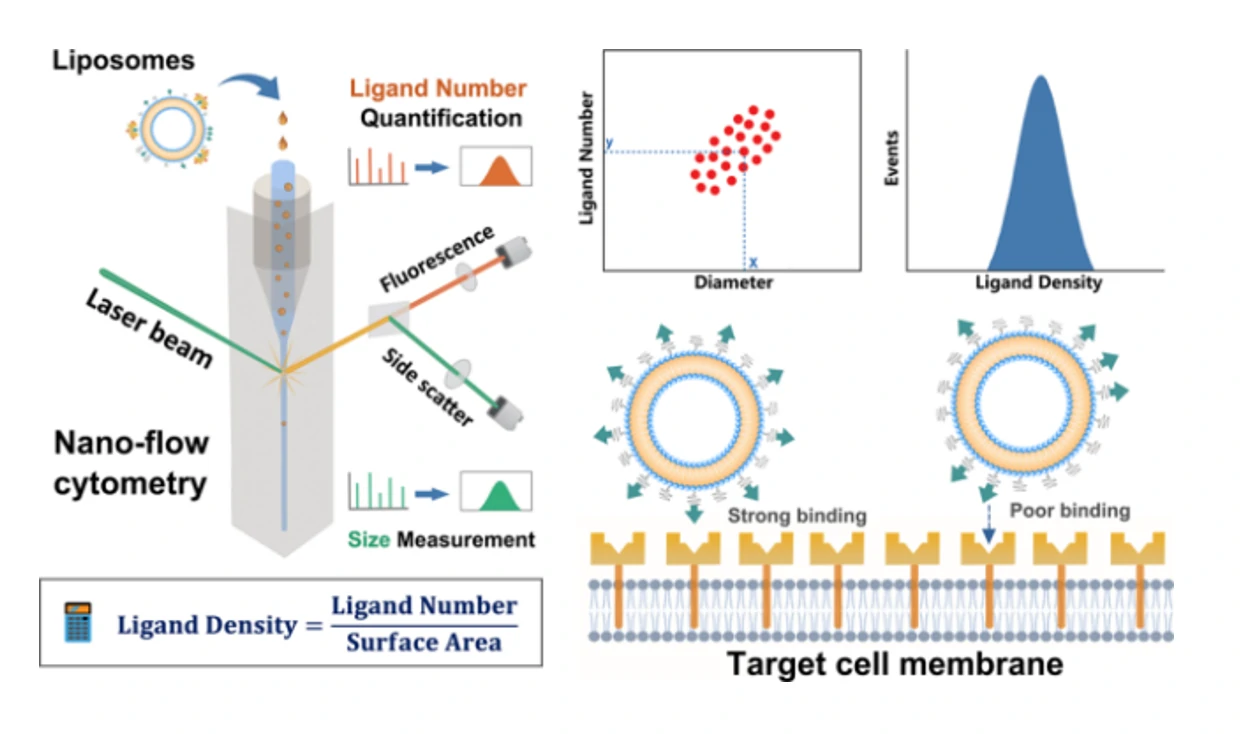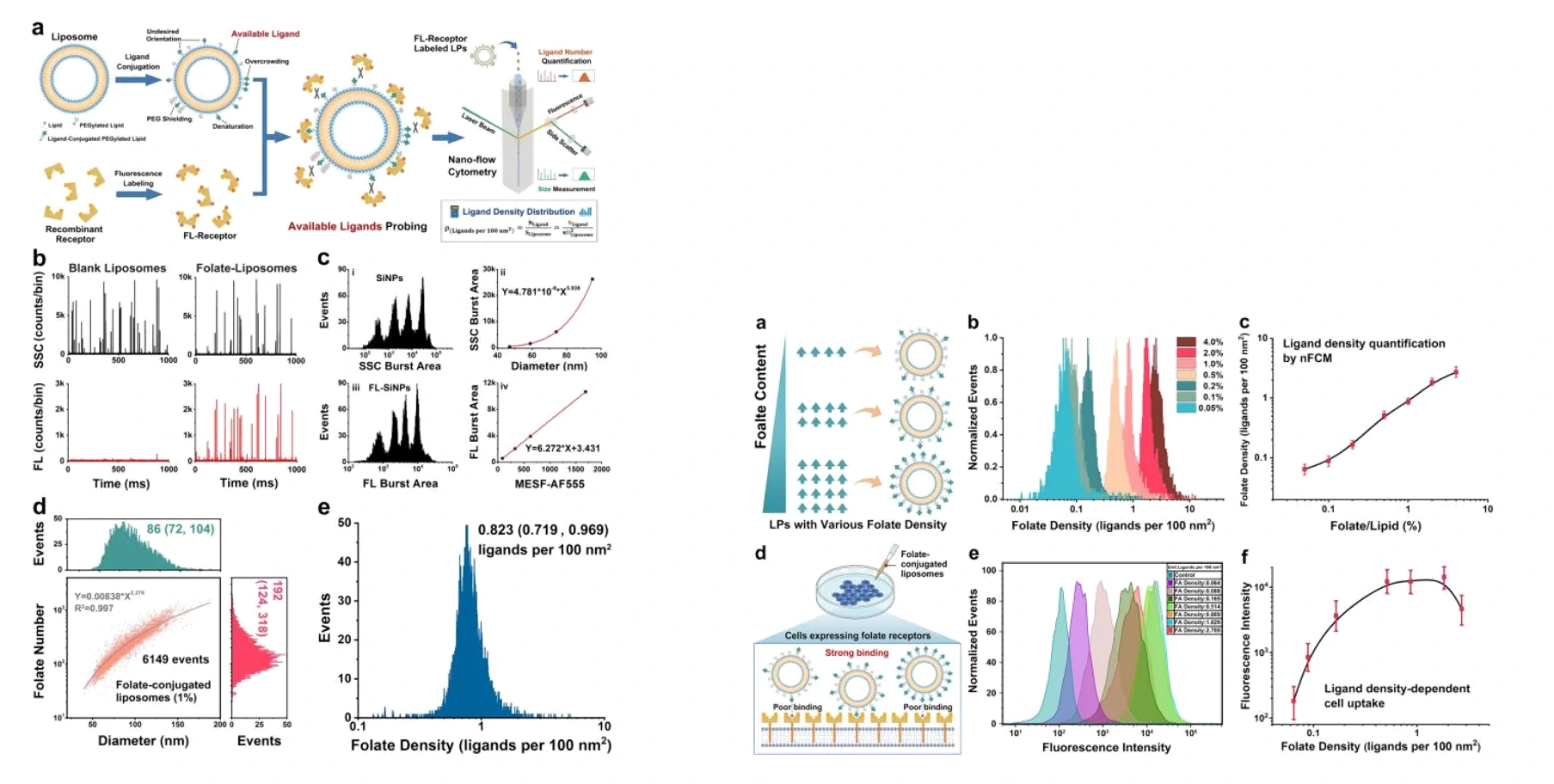Quantification of Available Ligand Density on the Surface of Targeted Liposomal Nanomedicines
Author: admin Date: February 22, 2024
Active targeting has been hailed as one of the most promising strategies to further enhance the therapeutic efficacy of liposomal nanomedicines. Owing to the critical role of ligand density in mediating cellular uptake and the intrinsic heterogeneity of liposomal formulations, precise quantification of the surface ligand density on a single-particle basis is of fundamental importance. In this work, we report a method to simultaneously measure the particle size and the number of ligands on the same liposomal nanoparticles by nanoflow cytometry. From this the ligand density for each individual liposome could be determined. The correlation between the available ligand density and cell targeting capability was assessed in quantitatively for liposomes modified with three different targeting moieties. The optimal ligand density was determined to be 0.5–2.0, 0.7, and 0.2 ligands per 100 nm^2 for folate-, transferrin-, and HER2-antibody-conjugated liposomes, respectively. These optimal values agreed well with the spike density of the natural counterparts, viruses. The as-developed approach can be applied to a wide range of active-targeting nanocarriers. The correlation between the available ligand density and cell targeting capability was assessed in a quantitative perspective for liposomes modified with three different targeting moieties.


Figure 1. Nano-flow cytometry (nFCM) analysis Figure 2. Measurement and calculation of the ligand
of the surface folate receptor expression density by nano-flow cytomstry (nFCM)
The optimal ligand density was determined to be 0.5–2.0, 0.7, and 0.2 ligands per 100 nm^2 for folate-, transferrin-, and HER2-antibody-conjugated liposomes, respectively. These optimal values agreed well with the spike density of the natural counterparts, viruses. The as-developed approach is generally applicable to a wide range of active-targeting nanocarriers.
ACS Nano, 2022, 16(4), 6886-6897.




